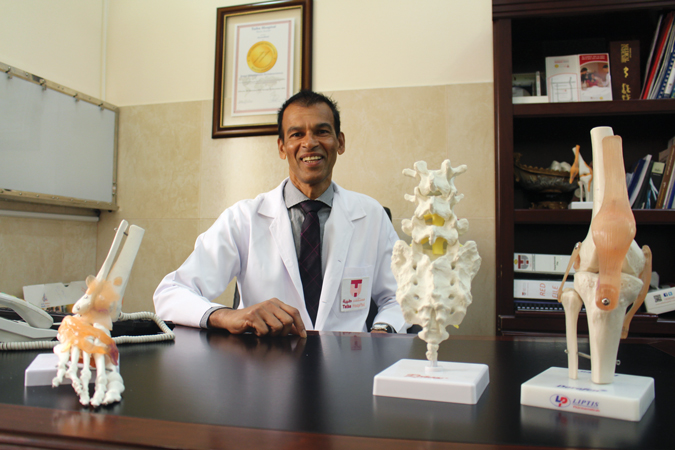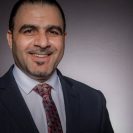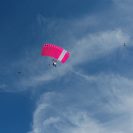As a young child Dr. Bona Tauro, pediatric orthopedic consultant at Taiba Hospital, loved working with his hands. He particularly enjoyed breaking things and then trying to put them back together.
“I suppose the same passed to my adult life and my professional career,” he said. “Bashing things out and assembling them back again. That’s what you do to a bone, in a refined way.”
Since his arrival in Kuwait, Dr. Bona has been adjusting to the heat and taking on patients with a smile. His good nature will undoubtedly put the most distressed patient at ease. With qualifications from both Europe and India, and more than 25 years experience in orthopedic consulting, you know you are in good hands.
While he has seen many cases come into his hospital, one of the most frequent he has dealt with in his time in Kuwait is club foot in babies. This creates a condition where babies are born with their feet turned inwards. Sometimes this is the result of a lack of space in the mother’s womb, and so feet get turned inwards. Other children, and this is very rare, are born with the condition based on a genetic background. Often, this requires surgery and is more difficult to treat.
It is impossible to reverse the effects of club foot before the child is born. However according to Dr. Bona, early detection is the key.
“The best results are when you start treatment right after birth,” he said. “When the child is born all the ligaments and the tendons are elastic, so it’s easy to mold them. Every day that passes it gets stiffer, and harder to fix. Parents must insist that the child is examined soon after birth.”
He has also seen many cases of developmental dysplasia of the hip (DDH) in newborns, when the child is born with a dislocated hip or an inadequate development of the socket. The condition is common when the child exits the womb bottom first, and also seen in premature children or those that have been in the special care unit after birth. The condition is most frequent in the first-born and in girls, particularly those who have a family history of the condition. Again, Dr. Bona stresses on early detection.
“Pick up the cases early, and the results will be good,” he said. “Whereas if you leave it long, things will be stiff and it will be difficult for the hip to grow normally. As a result the hip will be unstable, or in rare cases, out of joint.”
Another frequent case, but not immediately alarming, is bowlegs or knock knees. In this case the child’s legs are shaped like archer’s bow and can curve in or out. Usually children grow out of the deformity within three or four years. If not, they may be placed in braces to support and straighten the legs. In very rare cases surgery may be required.
The most common cause of this irregularity is a Vitamin D deficiency. Our body produces this vitamin when exposed to sunlight, yet sometimes it’s not enough. Not many foods create it naturally so parents can opt for supplements, Dr. Bona suggests cod liver, or fortified foods. This includes breakfast cereals and dairy products, and fatty fish such as salmon and tuna.
Dr. Bona, a specialist in trauma, also deals with every day breaks and fractures. His biggest piece of advice: if your child falls and breaks a bone, console him calmly because children often feel guilty for somehow creating the situation. Then support the broken limb, as movement will aggravate the pain and immediately take them to the emergency room.
“I can’t recommend a place better than Taiba,” he said. “Taiba has an international flavor. You have medical, nursing and support staff that represents the global community here. We are the community. So it’s like treating family really.”
To book an appointment with Dr. Bona call Taiba Hospital on 180 8088. For more information visit www.taibahospital.com. Check out their Facebook: TaibaHospitalQ8 or follow them on Instagram and Twitter @taibahospital.











